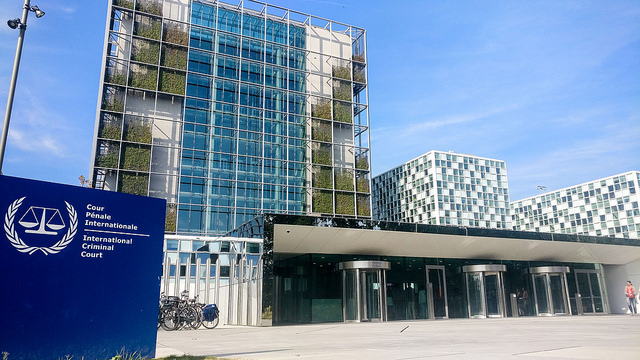The International Criminal Court (ICC) makes headlines around the world when it issues its occasional judgments. But most of the work of fighting impunity for severe crimes condemned by international law depends on national enforcement. Two separate efforts are currently underway to strengthen international cooperation in ensuring national prosecution: 1) a multi-year project of the International Law Commission (ILC) to draft articles for a future convention on the prevention and punishment of crimes against humanity, comparable to the existing Genocide Convention and Convention Against Torture; and 2) an episodic state-led initiative to draft a mutual legal assistance treaty for the most serious international crimes. The Human Rights Program at HLS recently convened a private workshop to discuss the vitally important ILC project.
A key issue in establishing state obligations to prosecute international crimes involves the choice of a definition that is appropriate to the obligations that are being imposed. The notion of “crimes against humanity” has a long history, but its definition has evolved over the years. The definition negotiated for the Rome Statute, which created the ICC—an international tribunal with a limited capacity to prosecute and adjudicate—may not provide the right definition for an obligatory system of consistent national prosecution.
The Rome Statute enumerates (section 7) ten offenses amounting to crimes against humanity, plus a residual category for comparable inhumane acts. Some of these offenses are self-evidently atrocious, like extermination, while others cover a broad range of conduct, like imprisonment and deportation. The whole enumeration is subject to a “chapeau” element intended to justify regarding them as severe, namely that the action is performed as part of a widespread or systematic attack directed against any civilian population, with knowledge of the attack. A particular defendant need only have performed a single instance of the conduct to be guilty of a crime against humanity; much of the opprobrium for low-level perpetrators arises from the fact that they have participated in a large-scale attack on civilians.
Unfortunately, the pivotal term “attack” received a seemingly formalistic definition in section 7. Taken literally, no physical violence is necessary for an attack, but merely multiple instances of any conduct on the list, pursuant to a state policy. Commentators have pointed this out, but the ICC has not had occasion to give a narrowing interpretation. After all, only extreme situations come before the ICC. Not only is the Court’s capacity limited to a small number of cases—the Rome Statute also restricts the pool by requiring a finding that the case is of sufficient gravity to justify the Court’s attention.
What works for a court of such limited jurisdiction may not be suitable for a treaty obligating states to pursue comprehensive enforcement. The issue is not worrisome in regard to the offense of extermination, but it becomes problematic in regard to the offense of imprisonment in violation of fundamental rules of international law. Past decisions have read such language broadly, to include detention that complies with national law if the national statute violates an international human rights norm. International tribunals have had little incentive to restrict this definition when the detention occurs in connection with a genuine violent attack on civilians. The criminal code of Australia spells out the standard for imprisonment as met by any violation of articles 9, 14, or 15 of the International Covenant on Civil Rights. The result could be that a disproportionate policy of pretrial detention, which is common in many countries, amounts as such to a crime against humanity and that states are obliged to prosecute the judges and jailers who implement it.
The designers of a future treaty on crimes against humanity need to deal explicitly with this definitional issue and its consequences. One possibility would be to clarify or revise the definition of an “attack” for purposes of the treaty. Similarly, other safeguards could be adopted to countervail against the borrowed definition. One cannot simply rely on prosecutorial common sense to eliminate the problem in practice, for several reasons. First, the ILC project would also enable nonnationals to raise the risk of falling victim to a crime against humanity as an absolute defense against removal. And in some countries (though not Australia), the criminal justice system will enable private prosecution of crimes against humanity. This important new treaty needs a solution appropriate to its context.
Gerald L. Neuman is the J. Sinclair Armstrong Professor of International, Foreign, and Comparative Law, and the Co-Director of the Human Rights Program at HLS. He teaches human rights, constitutional law, and immigration and nationality law. His current research focuses on international human rights bodies, transnational dimensions of constitutionalism, and rights of foreign nationals. He is the author of Strangers to the Constitution: Immigrants, Borders and Fundamental Law (Princeton 1996), and co-author of the casebook Human Rights (with Louis Henkin et al., Foundation Press).










